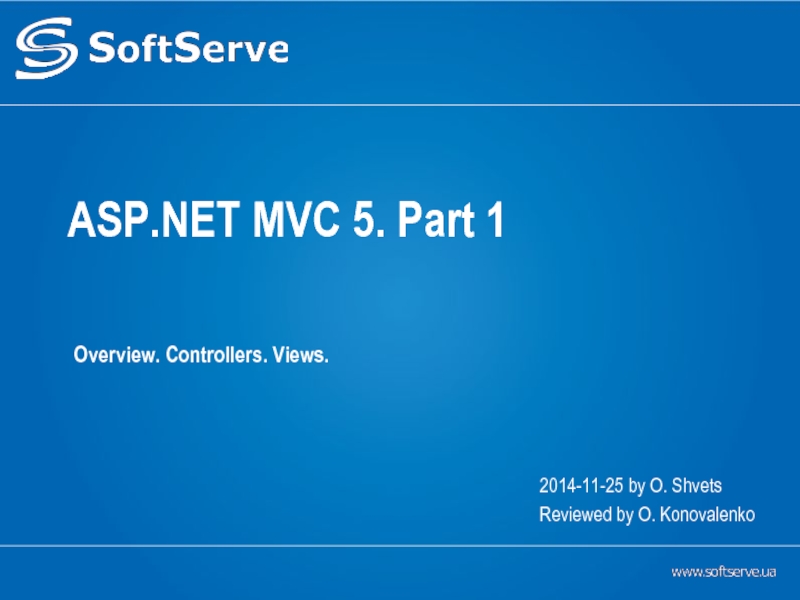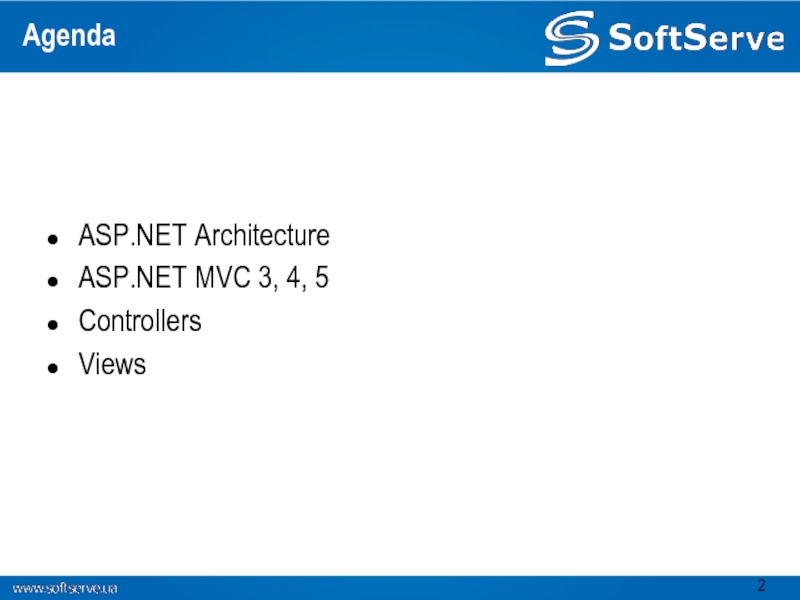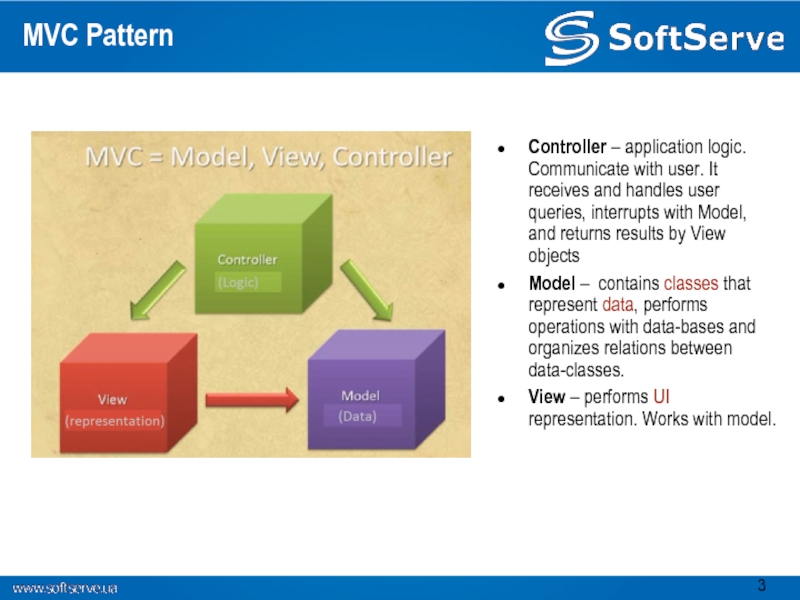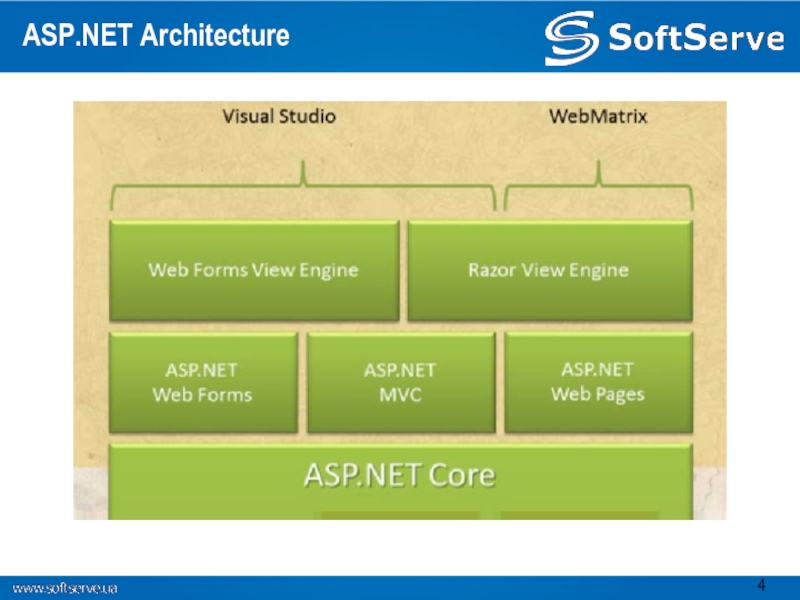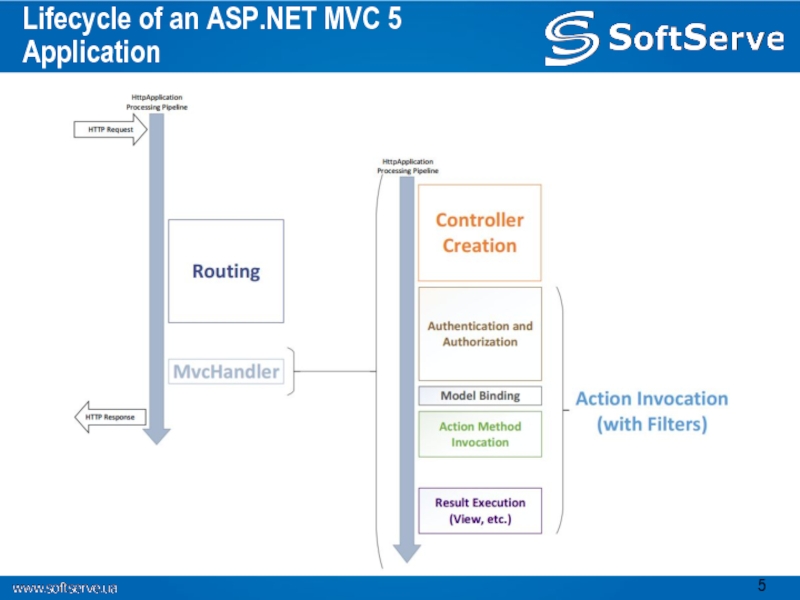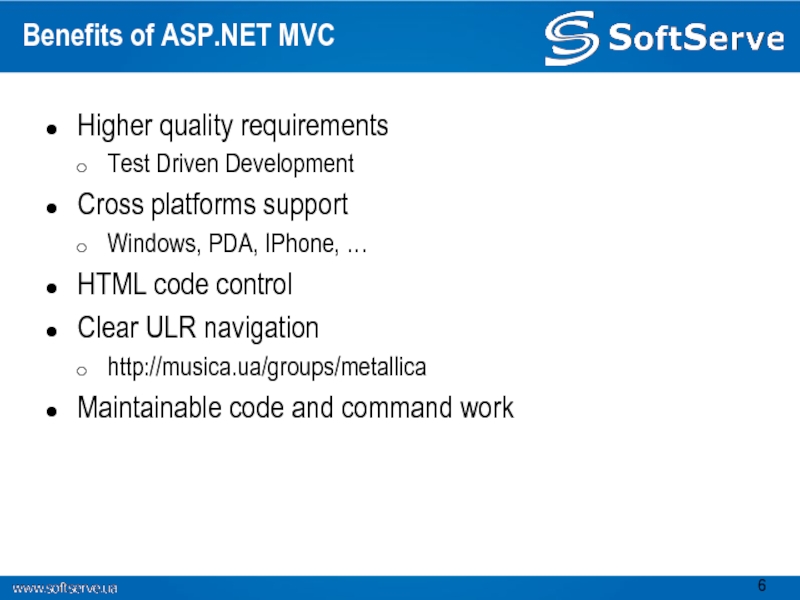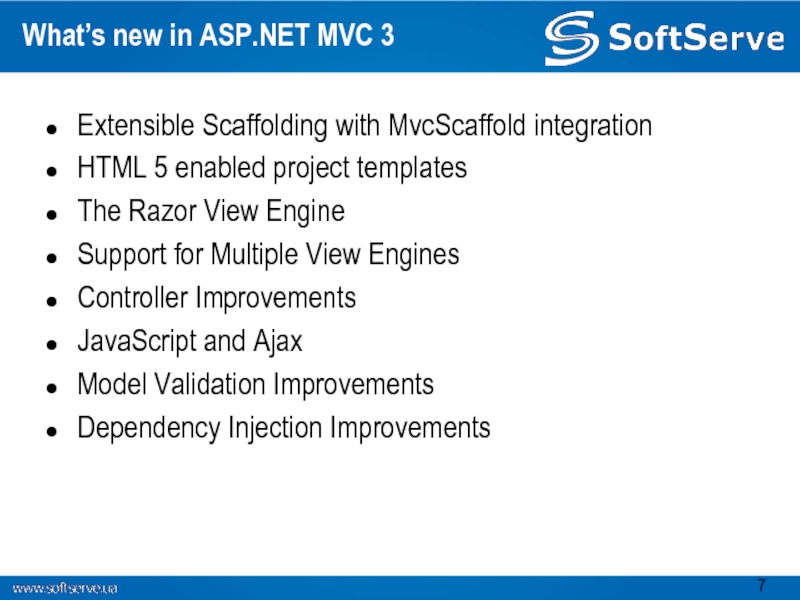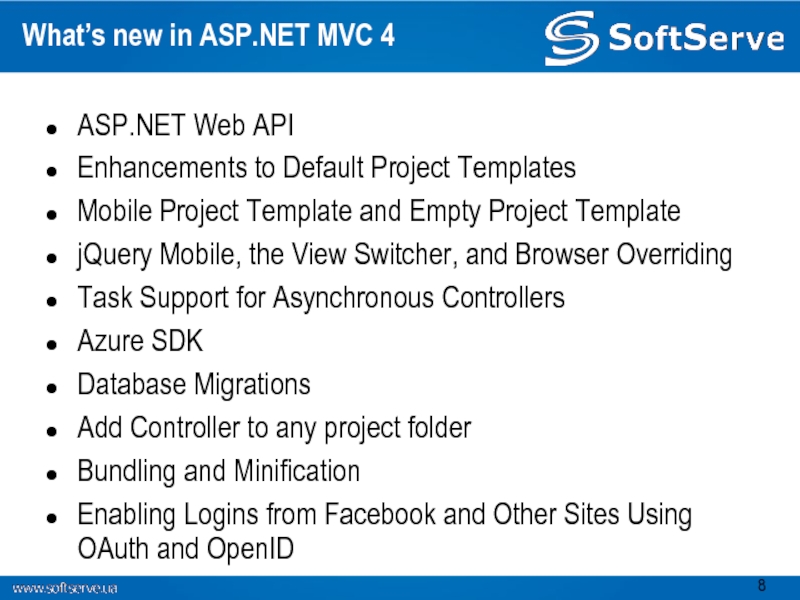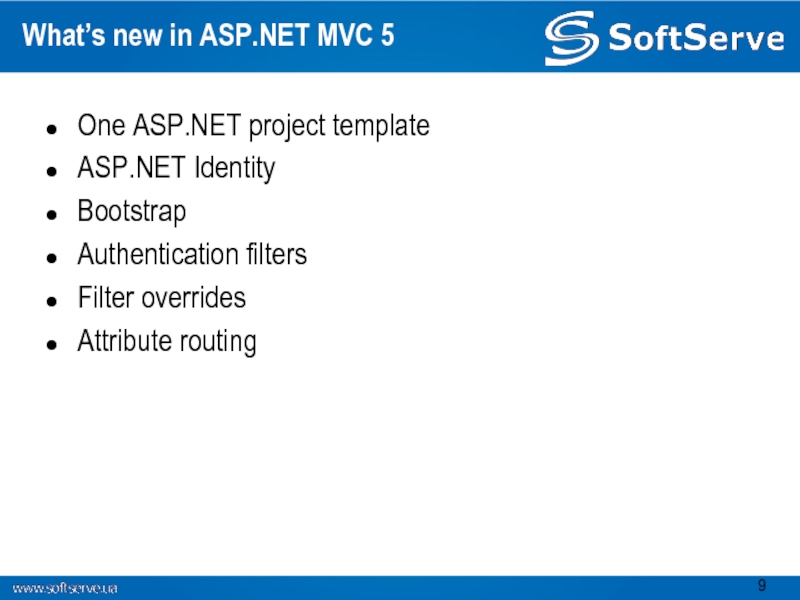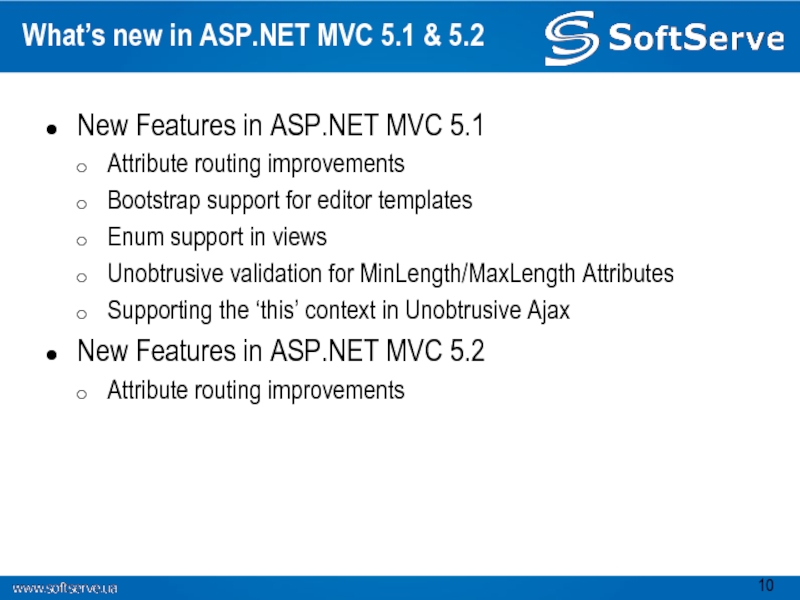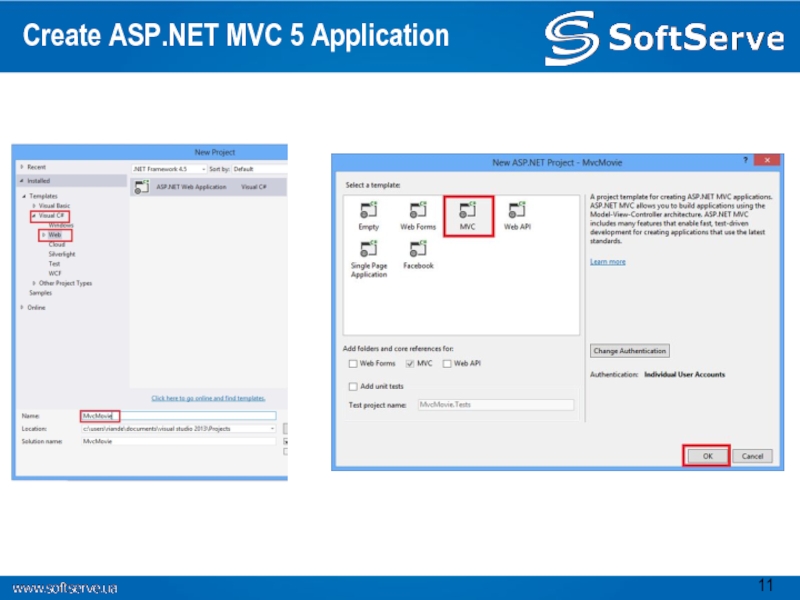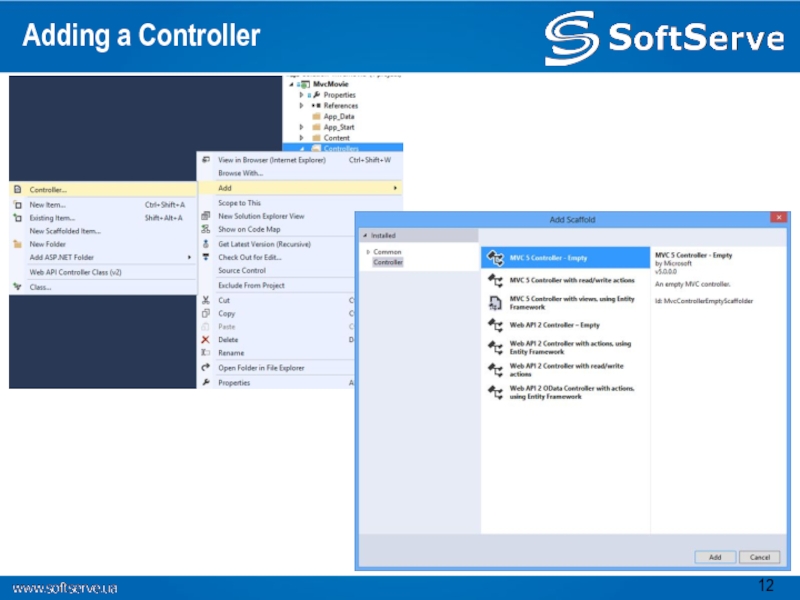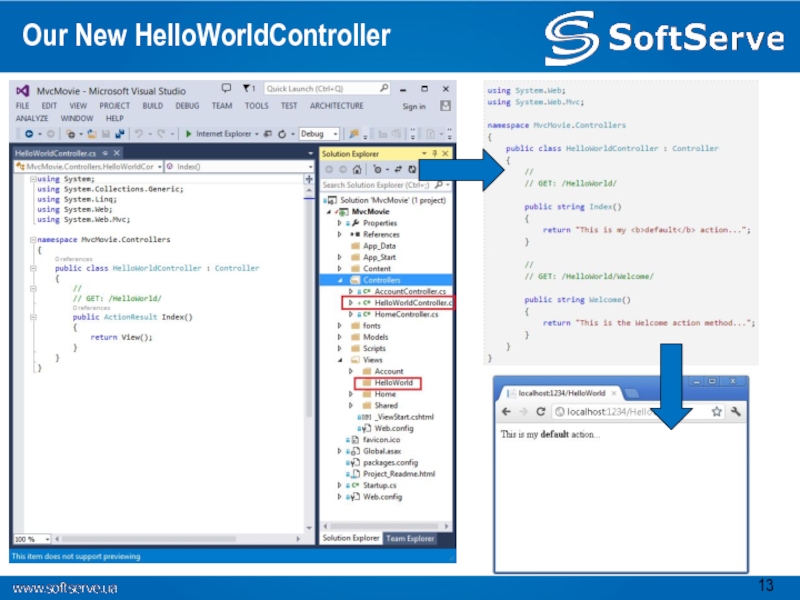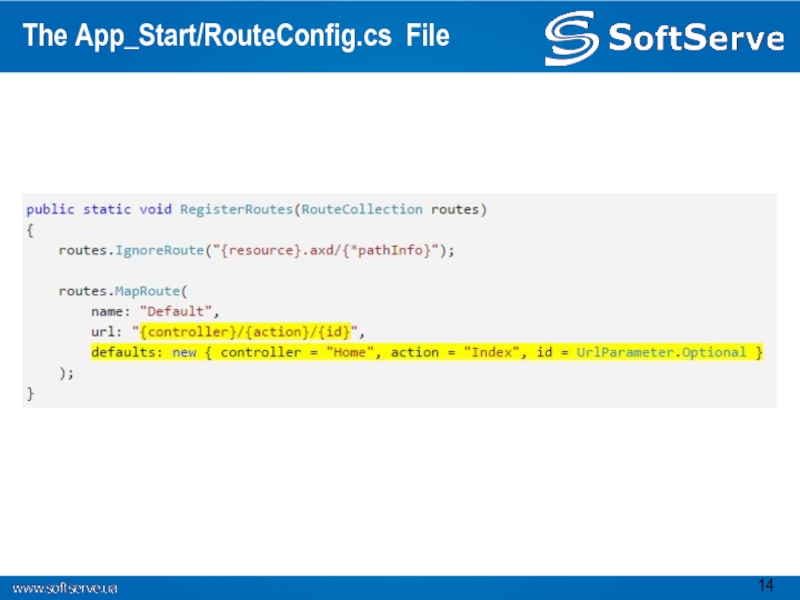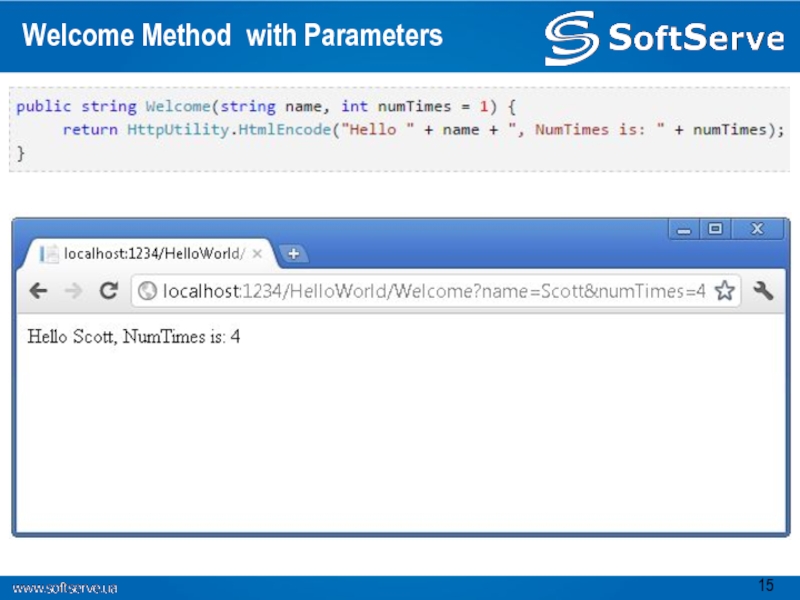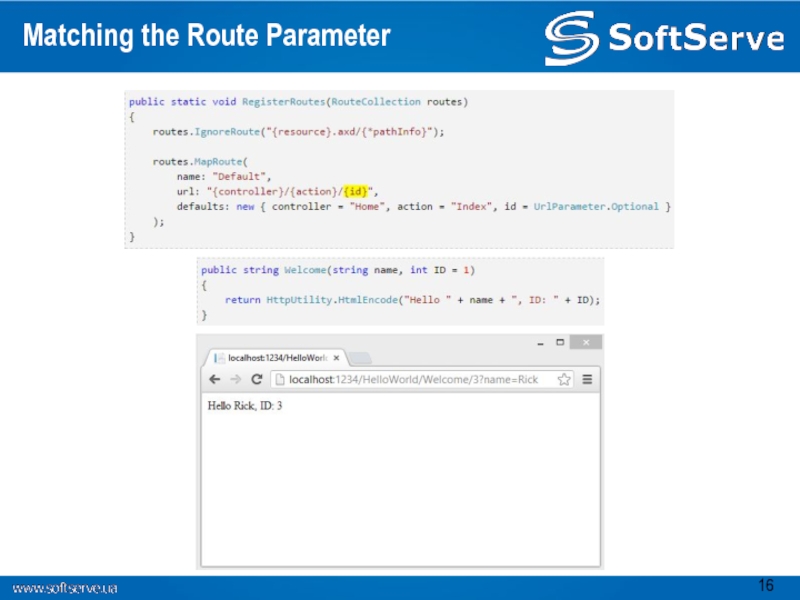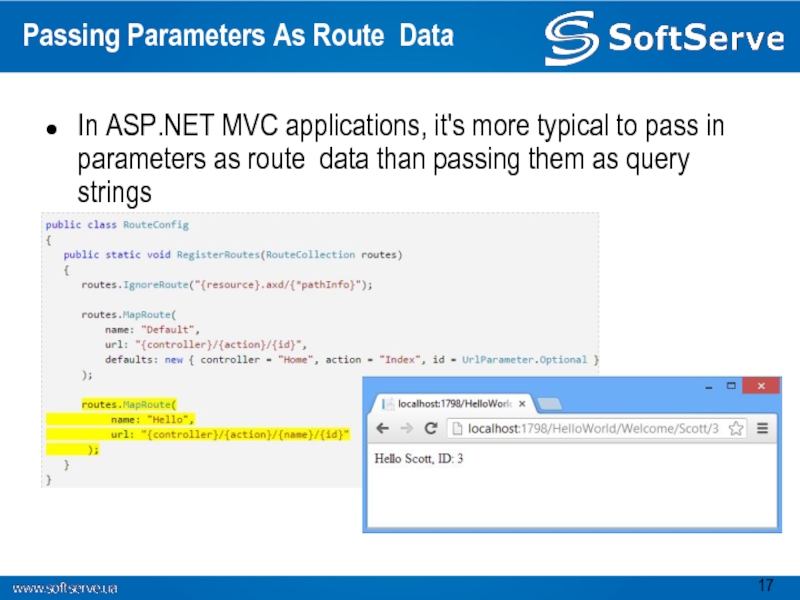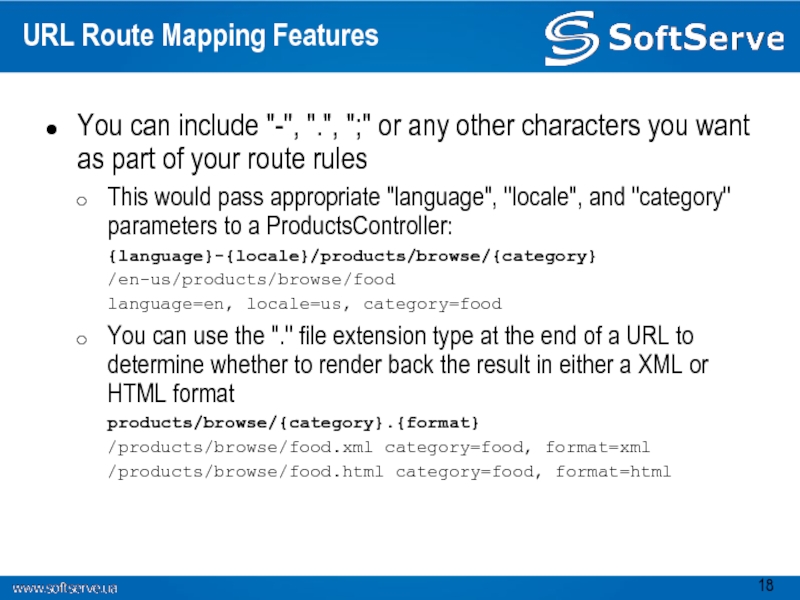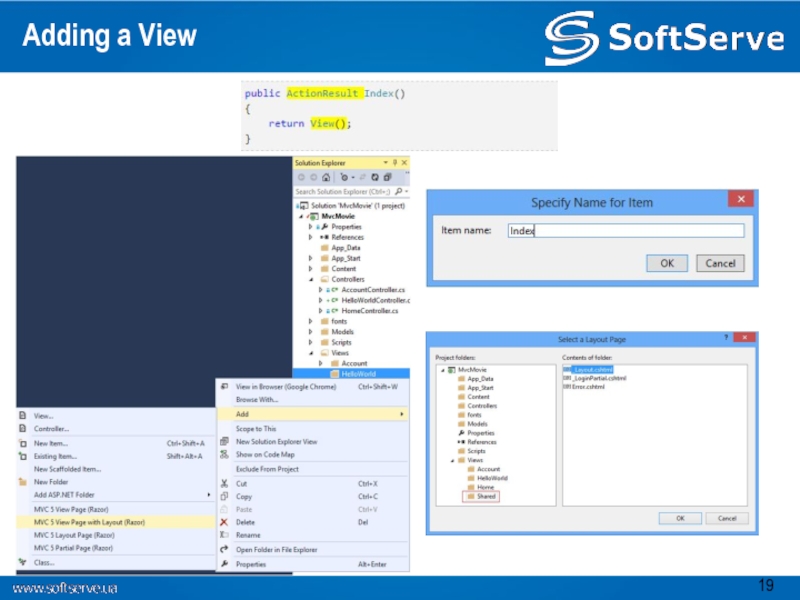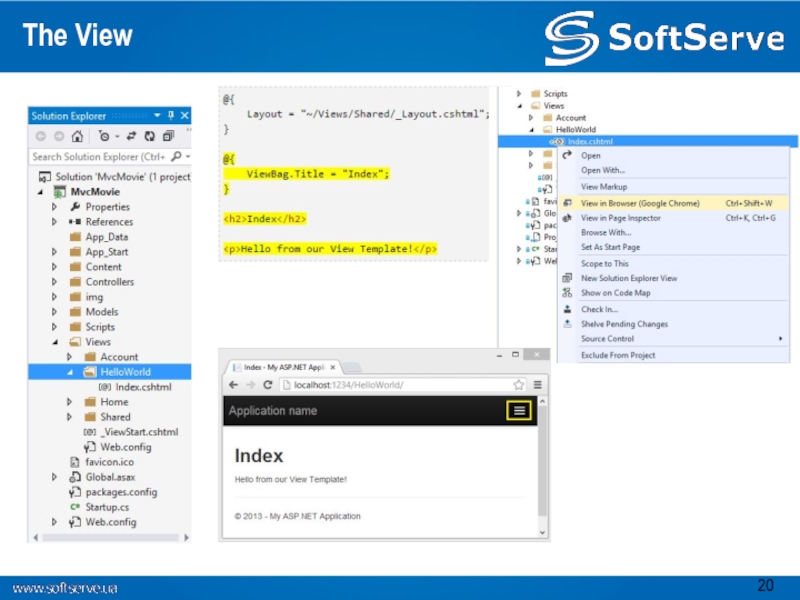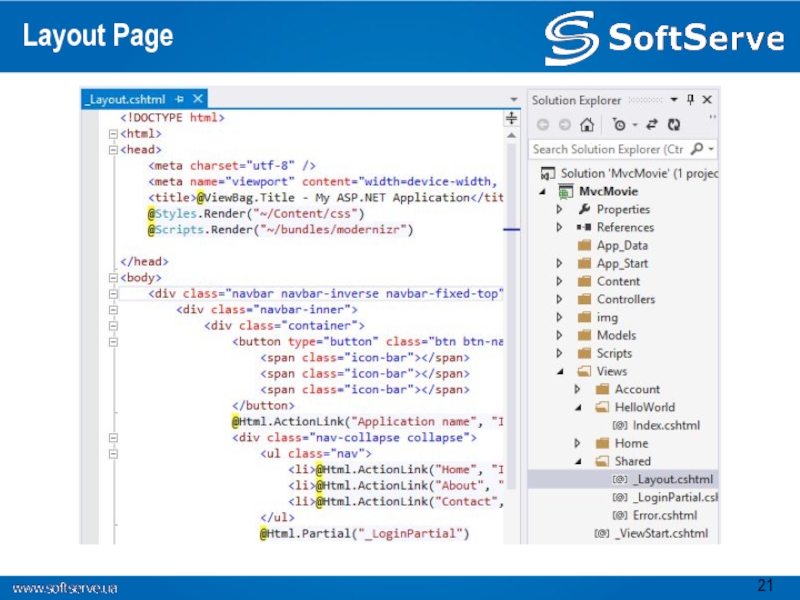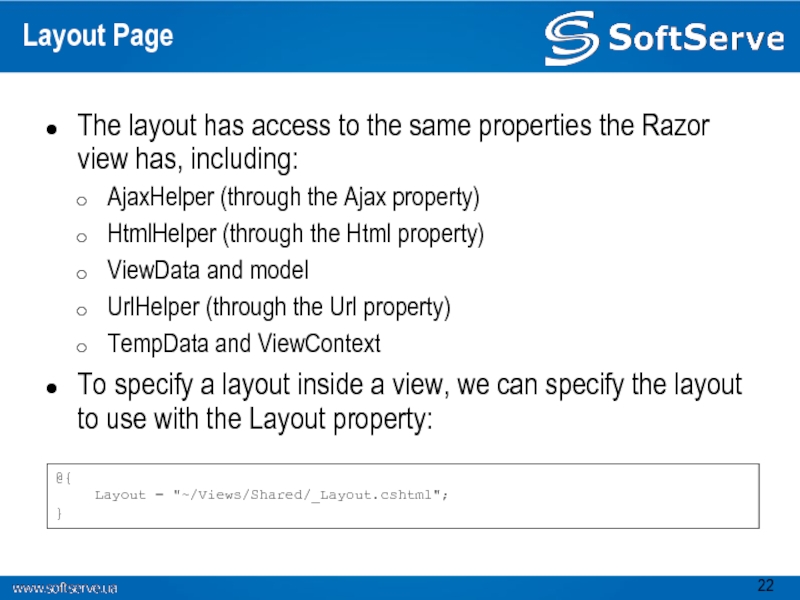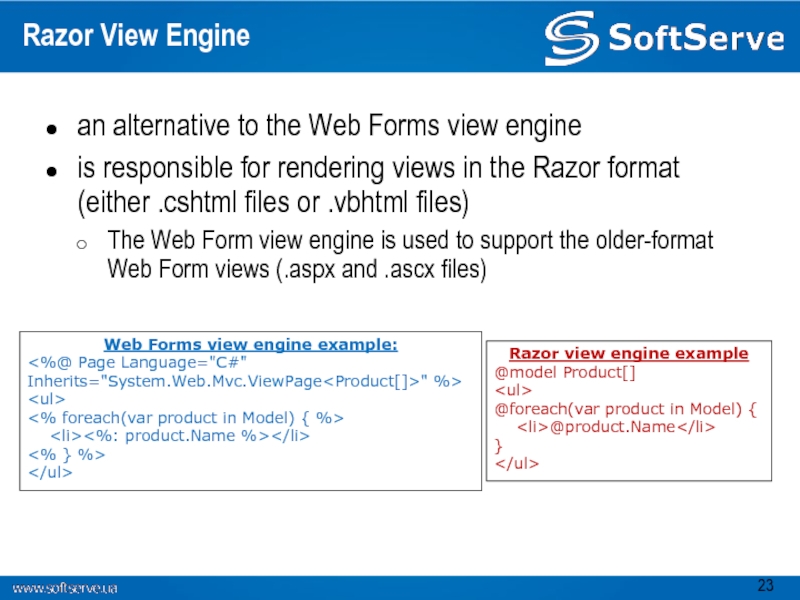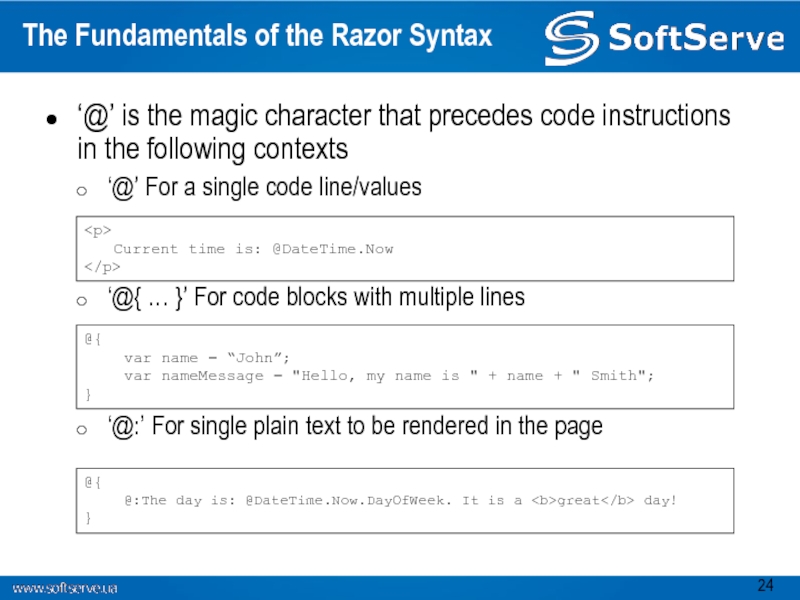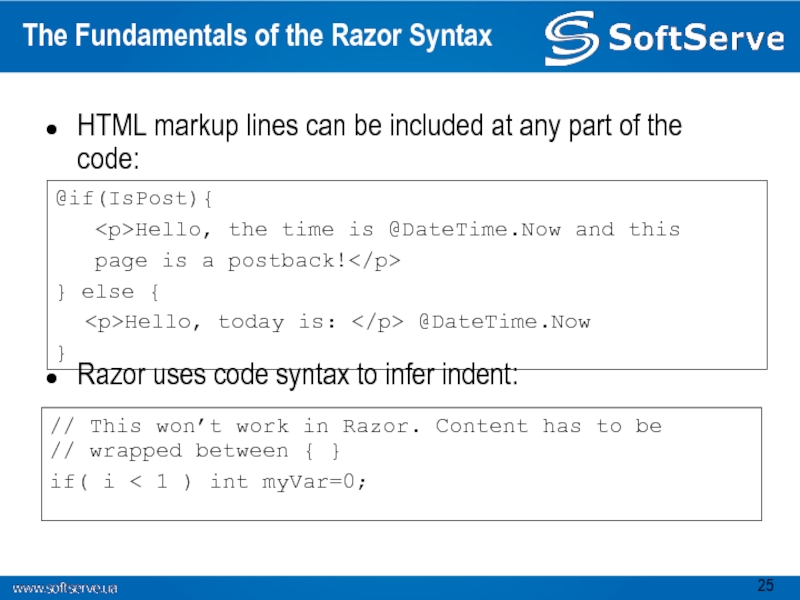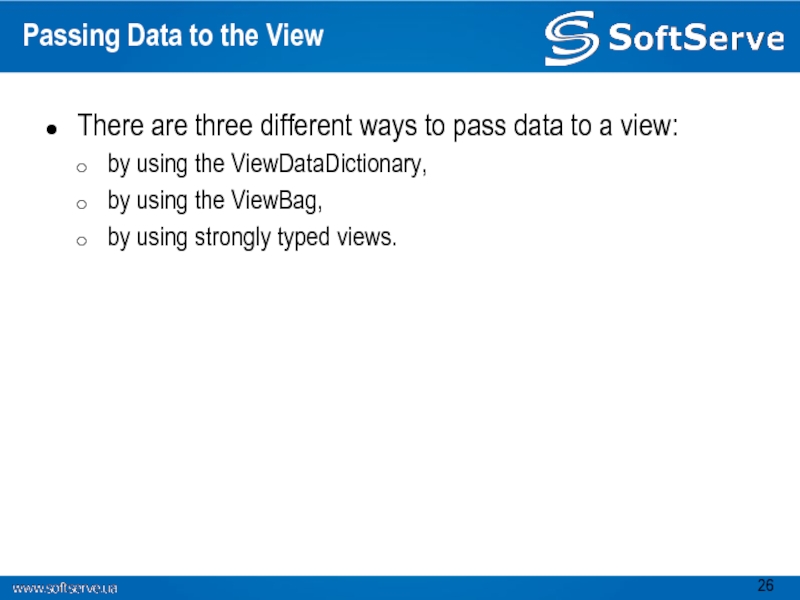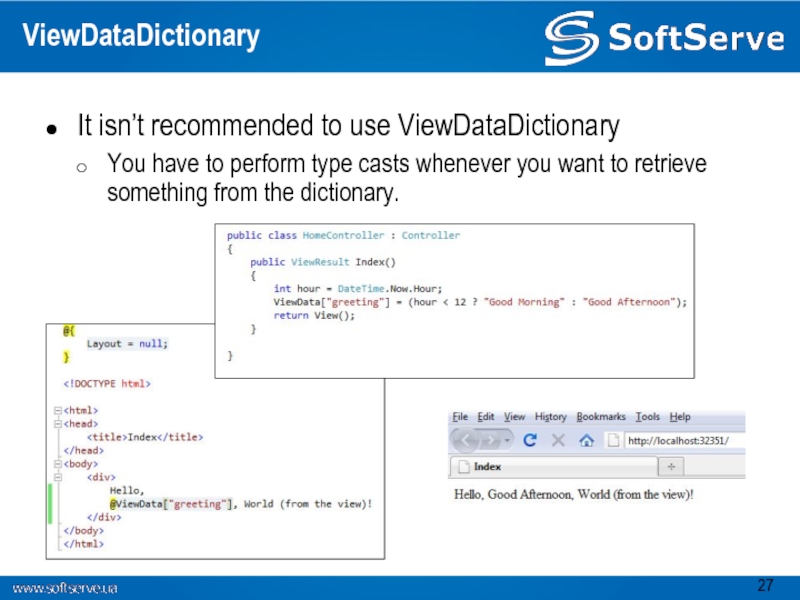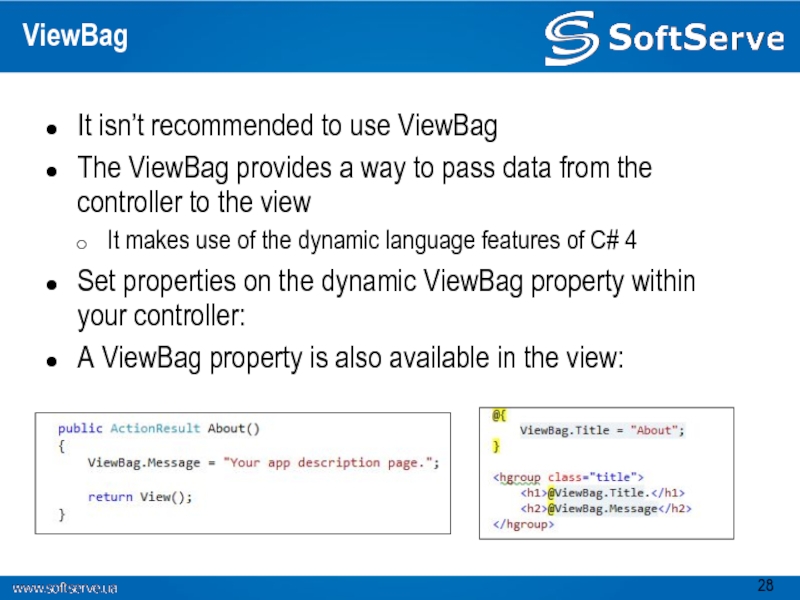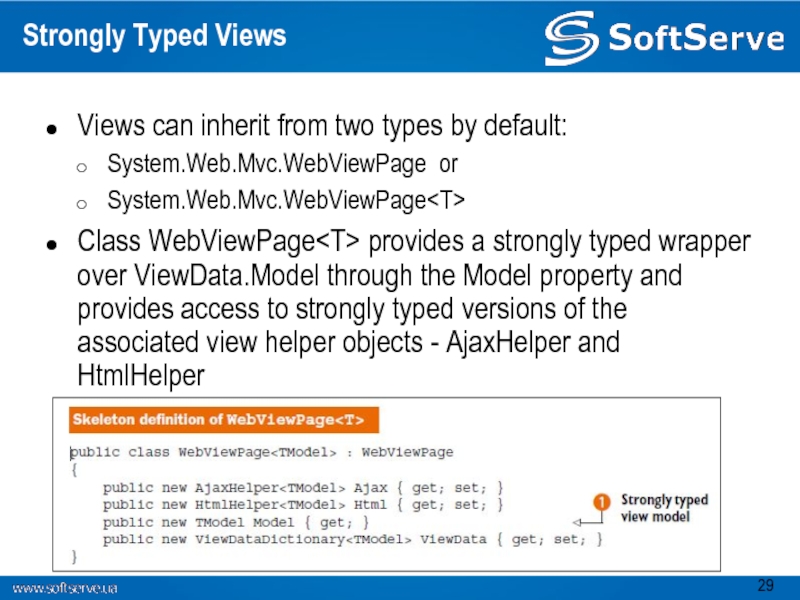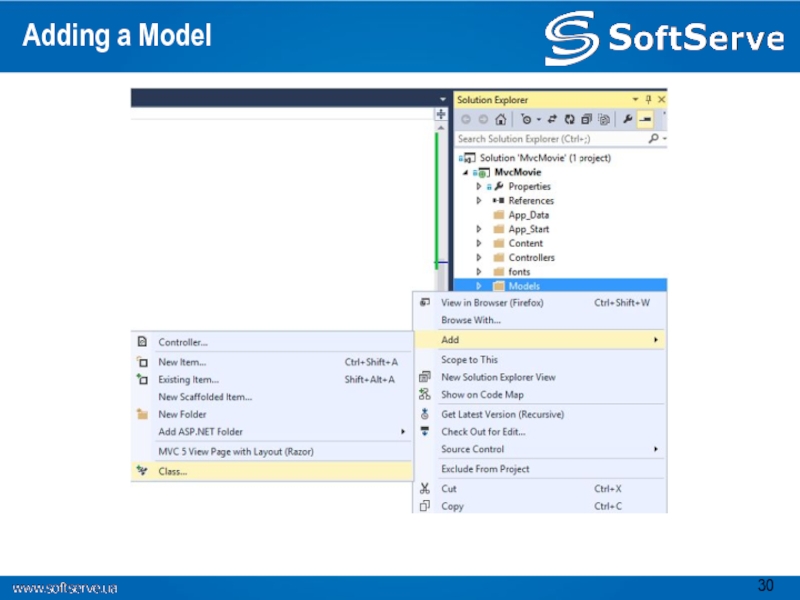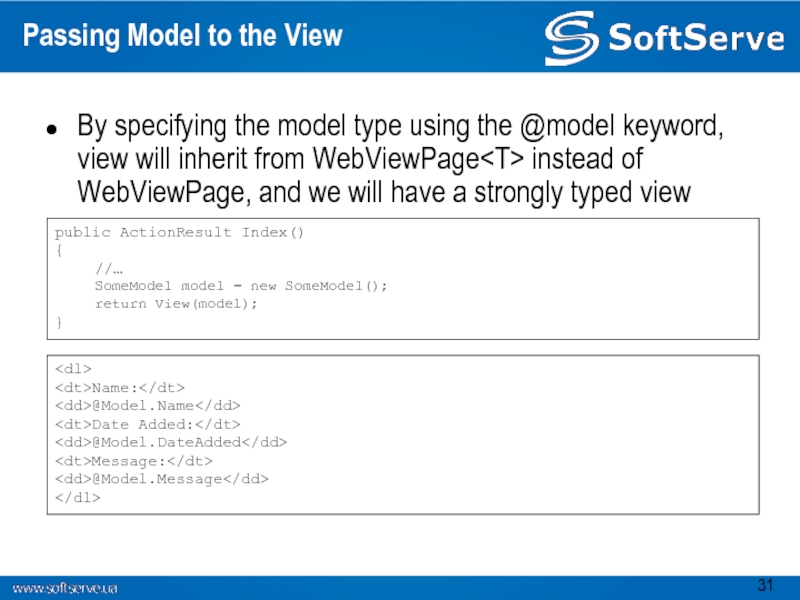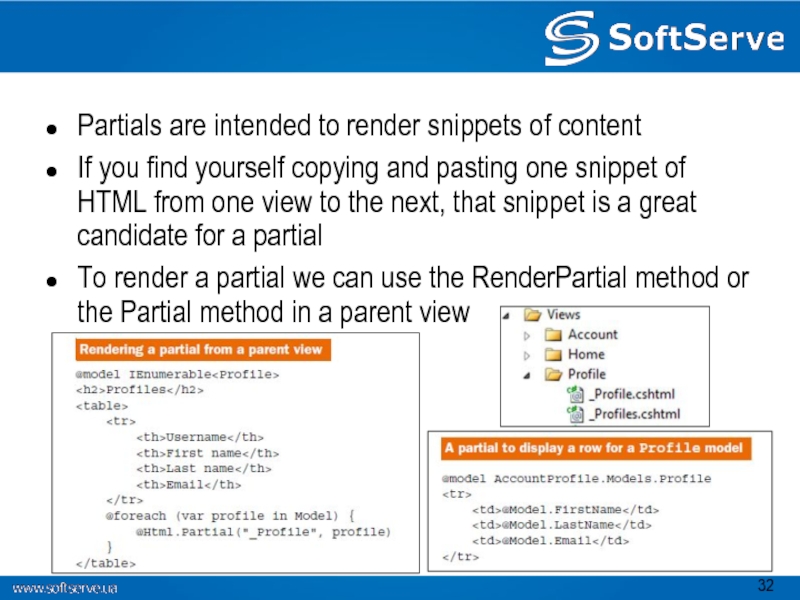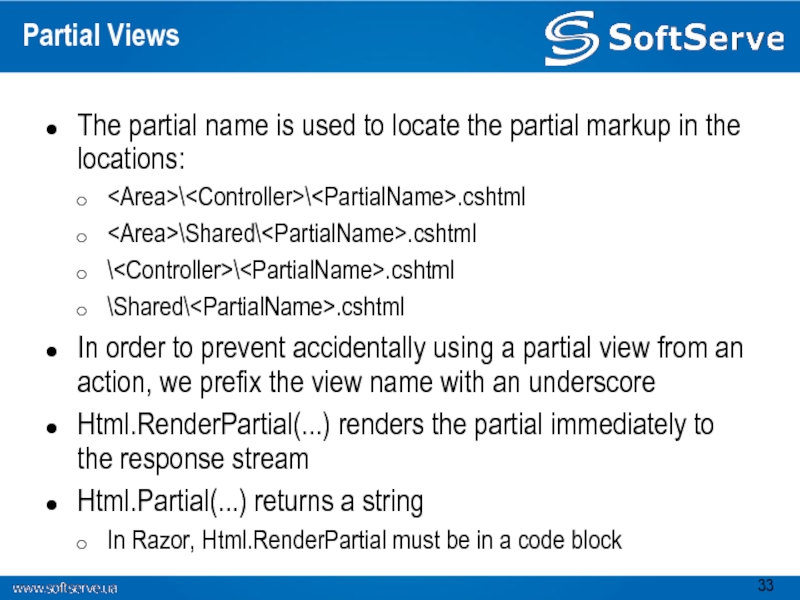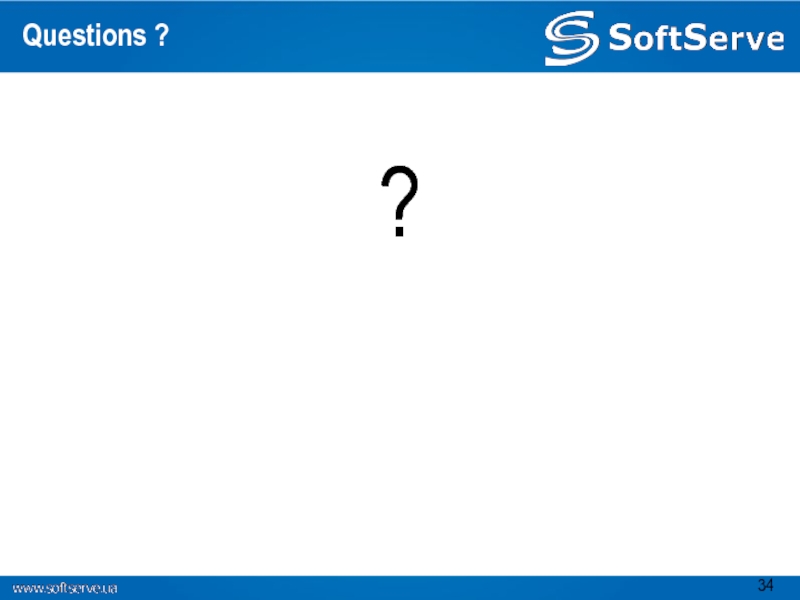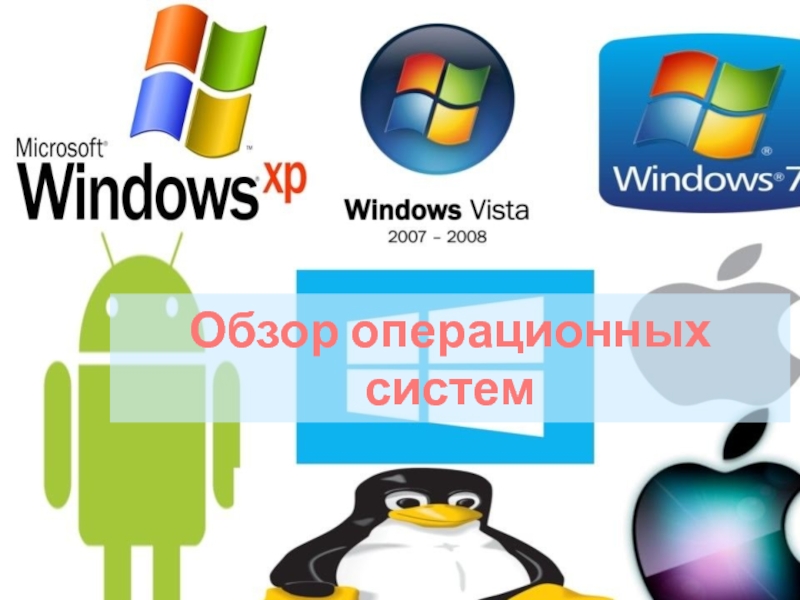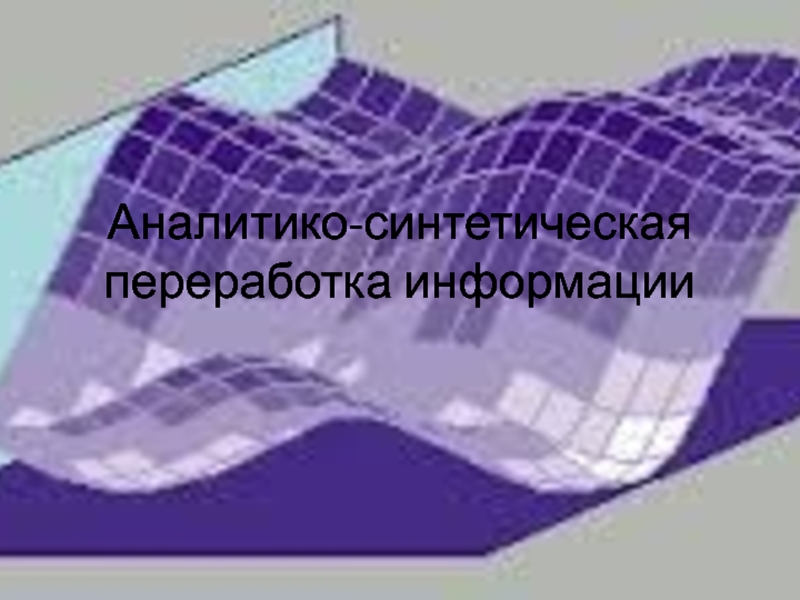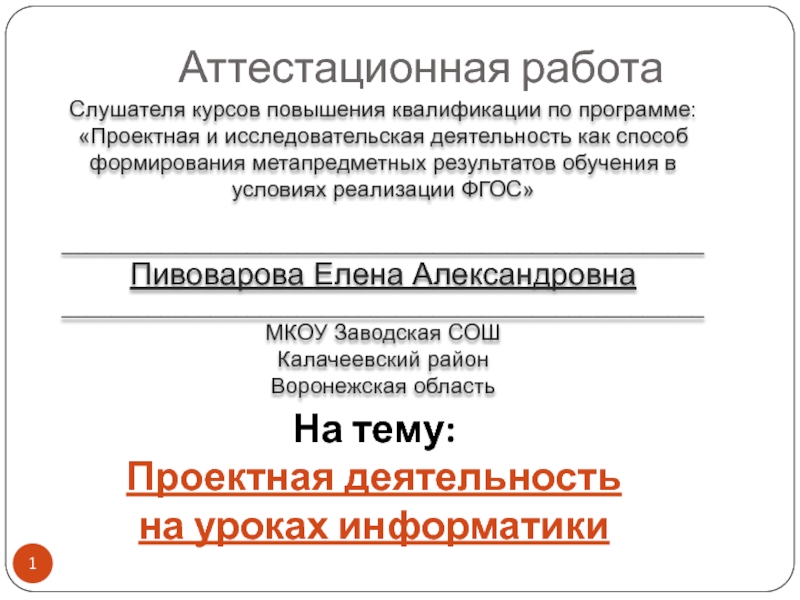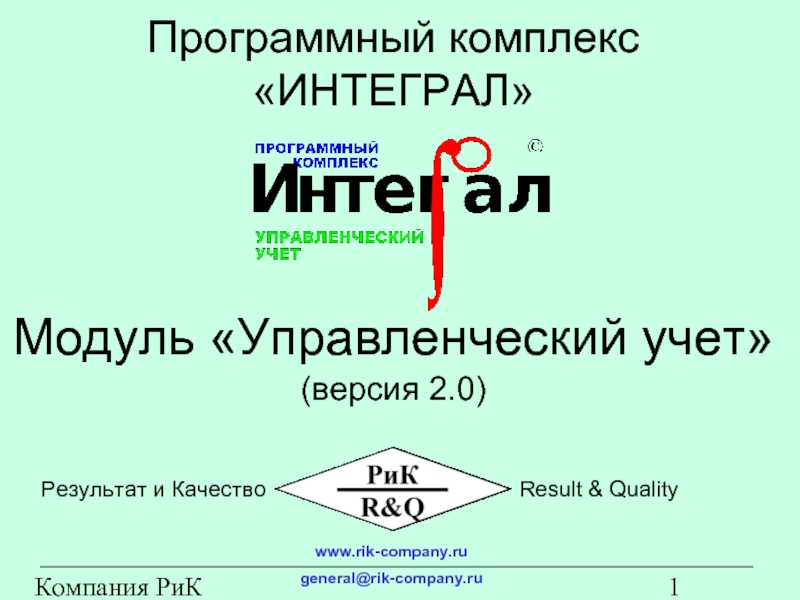- Главная
- Разное
- Дизайн
- Бизнес и предпринимательство
- Аналитика
- Образование
- Развлечения
- Красота и здоровье
- Финансы
- Государство
- Путешествия
- Спорт
- Недвижимость
- Армия
- Графика
- Культурология
- Еда и кулинария
- Лингвистика
- Английский язык
- Астрономия
- Алгебра
- Биология
- География
- Детские презентации
- Информатика
- История
- Литература
- Маркетинг
- Математика
- Медицина
- Менеджмент
- Музыка
- МХК
- Немецкий язык
- ОБЖ
- Обществознание
- Окружающий мир
- Педагогика
- Русский язык
- Технология
- Физика
- Философия
- Химия
- Шаблоны, картинки для презентаций
- Экология
- Экономика
- Юриспруденция
ASP.NET MVC 5. Part 1. Overview. Controllers. Views презентация
Содержание
- 1. ASP.NET MVC 5. Part 1. Overview. Controllers. Views
- 2. Agenda ASP.NET Architecture ASP.NET MVC 3, 4, 5 Controllers Views
- 3. MVC Pattern Controller – application logic. Communicate
- 4. ASP.NET Architecture
- 5. Lifecycle of an ASP.NET MVC 5 Application
- 6. Benefits of ASP.NET MVC Higher quality requirements
- 7. What’s new in ASP.NET MVC 3 Extensible
- 8. What’s new in ASP.NET MVC 4 ASP.NET
- 9. What’s new in ASP.NET MVC 5 One
- 10. What’s new in ASP.NET MVC 5.1 &
- 11. Create ASP.NET MVC 5 Application
- 12. Adding a Controller
- 13. Our New HelloWorldController
- 14. The App_Start/RouteConfig.cs File
- 15. Welcome Method with Parameters
- 16. Matching the Route Parameter
- 17. Passing Parameters As Route Data In ASP.NET
- 18. URL Route Mapping Features You can include
- 19. Adding a View
- 20. The View
- 21. Layout Page
- 22. Layout Page The layout has access to
- 23. Razor View Engine an alternative to the
- 24. The Fundamentals of the Razor Syntax ‘@’
- 25. The Fundamentals of the Razor Syntax HTML
- 26. Passing Data to the View There are
- 27. ViewDataDictionary It isn’t recommended to use ViewDataDictionary
- 28. ViewBag It isn’t recommended to use ViewBag
- 29. Strongly Typed Views Views can inherit from
- 30. Adding a Model
- 31. Passing Model to the View By specifying
- 32. Partials are intended to render snippets
- 33. Partial Views The partial name is used
- 34. ? Questions ?
Слайд 1ASP.NET MVC 5. Part 1
Overview. Controllers. Views.
2014-11-25 by O. Shvets
Reviewed by
Слайд 3MVC Pattern
Controller – application logic. Communicate with user. It receives and
Model – contains classes that represent data, performs operations with data-bases and organizes relations between data-classes.
View – performs UI representation. Works with model.
Слайд 6Benefits of ASP.NET MVC
Higher quality requirements
Test Driven Development
Cross platforms support
Windows,
HTML code control
Clear ULR navigation
http://musica.ua/groups/metallica
Maintainable code and command work
Слайд 7What’s new in ASP.NET MVC 3
Extensible Scaffolding with MvcScaffold integration
HTML 5
The Razor View Engine
Support for Multiple View Engines
Controller Improvements
JavaScript and Ajax
Model Validation Improvements
Dependency Injection Improvements
Слайд 8What’s new in ASP.NET MVC 4
ASP.NET Web API
Enhancements to Default Project
Mobile Project Template and Empty Project Template
jQuery Mobile, the View Switcher, and Browser Overriding
Task Support for Asynchronous Controllers
Azure SDK
Database Migrations
Add Controller to any project folder
Bundling and Minification
Enabling Logins from Facebook and Other Sites Using OAuth and OpenID
Слайд 9What’s new in ASP.NET MVC 5
One ASP.NET project template
ASP.NET Identity
Bootstrap
Authentication filters
Filter
Attribute routing
Слайд 10What’s new in ASP.NET MVC 5.1 & 5.2
New Features in ASP.NET
Attribute routing improvements
Bootstrap support for editor templates
Enum support in views
Unobtrusive validation for MinLength/MaxLength Attributes
Supporting the ‘this’ context in Unobtrusive Ajax
New Features in ASP.NET MVC 5.2
Attribute routing improvements
Слайд 17Passing Parameters As Route Data
In ASP.NET MVC applications, it's more typical
Слайд 18URL Route Mapping Features
You can include "-", ".", ";" or any
This would pass appropriate "language", "locale", and "category" parameters to a ProductsController:
{language}-{locale}/products/browse/{category}
/en-us/products/browse/food
language=en, locale=us, category=food
You can use the "." file extension type at the end of a URL to determine whether to render back the result in either a XML or HTML format
products/browse/{category}.{format}
/products/browse/food.xml category=food, format=xml
/products/browse/food.html category=food, format=html
Слайд 22Layout Page
The layout has access to the same properties the Razor
AjaxHelper (through the Ajax property)
HtmlHelper (through the Html property)
ViewData and model
UrlHelper (through the Url property)
TempData and ViewContext
To specify a layout inside a view, we can specify the layout to use with the Layout property:
@{
Layout = "~/Views/Shared/_Layout.cshtml";
}
Слайд 23Razor View Engine
an alternative to the Web Forms view engine
is
The Web Form view engine is used to support the older-format Web Form views (.aspx and .ascx files)
Web Forms view engine example: Razor view engine example
<%@ Page Language="C#" Inherits="System.Web.Mvc.ViewPage
<% foreach(var product in Model) { %>
<% } %>
@model Product[]
@foreach(var product in Model) {
}
Слайд 24The Fundamentals of the Razor Syntax
‘@’ is the magic character that
‘@’ For a single code line/values
‘@{ … }’ For code blocks with multiple lines
‘@:’ For single plain text to be rendered in the page
Current time is: @DateTime.Now
@{
var name = “John”;
var nameMessage = "Hello, my name is " + name + " Smith";
}
@{
@:The day is: @DateTime.Now.DayOfWeek. It is a great day!
}
Слайд 25The Fundamentals of the Razor Syntax
HTML markup lines can be included
Razor uses code syntax to infer indent:
@if(IsPost){
Hello, the time is @DateTime.Now and this
page is a postback!
} else {
Hello, today is:
@DateTime.Now}
// This won’t work in Razor. Content has to be
// wrapped between { }
if( i < 1 ) int myVar=0;
Слайд 26Passing Data to the View
There are three different ways to pass
by using the ViewDataDictionary,
by using the ViewBag,
by using strongly typed views.
Слайд 27ViewDataDictionary
It isn’t recommended to use ViewDataDictionary
You have to perform type casts
Слайд 28ViewBag
It isn’t recommended to use ViewBag
The ViewBag provides a way to
It makes use of the dynamic language features of C# 4
Set properties on the dynamic ViewBag property within your controller:
A ViewBag property is also available in the view:
Слайд 29Strongly Typed Views
Views can inherit from two types by default:
System.Web.Mvc.WebViewPage or
System.Web.Mvc.WebViewPage
Class
Слайд 31Passing Model to the View
By specifying the model type using the
public ActionResult Index()
{
//…
SomeModel model = new SomeModel();
return View(model);
}
- Name:
- @Model.Name
- Date Added:
- @Model.DateAdded
- Message:
- @Model.Message
Слайд 32
Partials are intended to render snippets of content
If you find yourself
To render a partial we can use the RenderPartial method or the Partial method in a parent view
Слайд 33Partial Views
The partial name is used to locate the partial markup
\
\Shared\
\
\Shared\
In order to prevent accidentally using a partial view from an action, we prefix the view name with an underscore
Html.RenderPartial(...) renders the partial immediately to the response stream
Html.Partial(...) returns a string
In Razor, Html.RenderPartial must be in a code block
